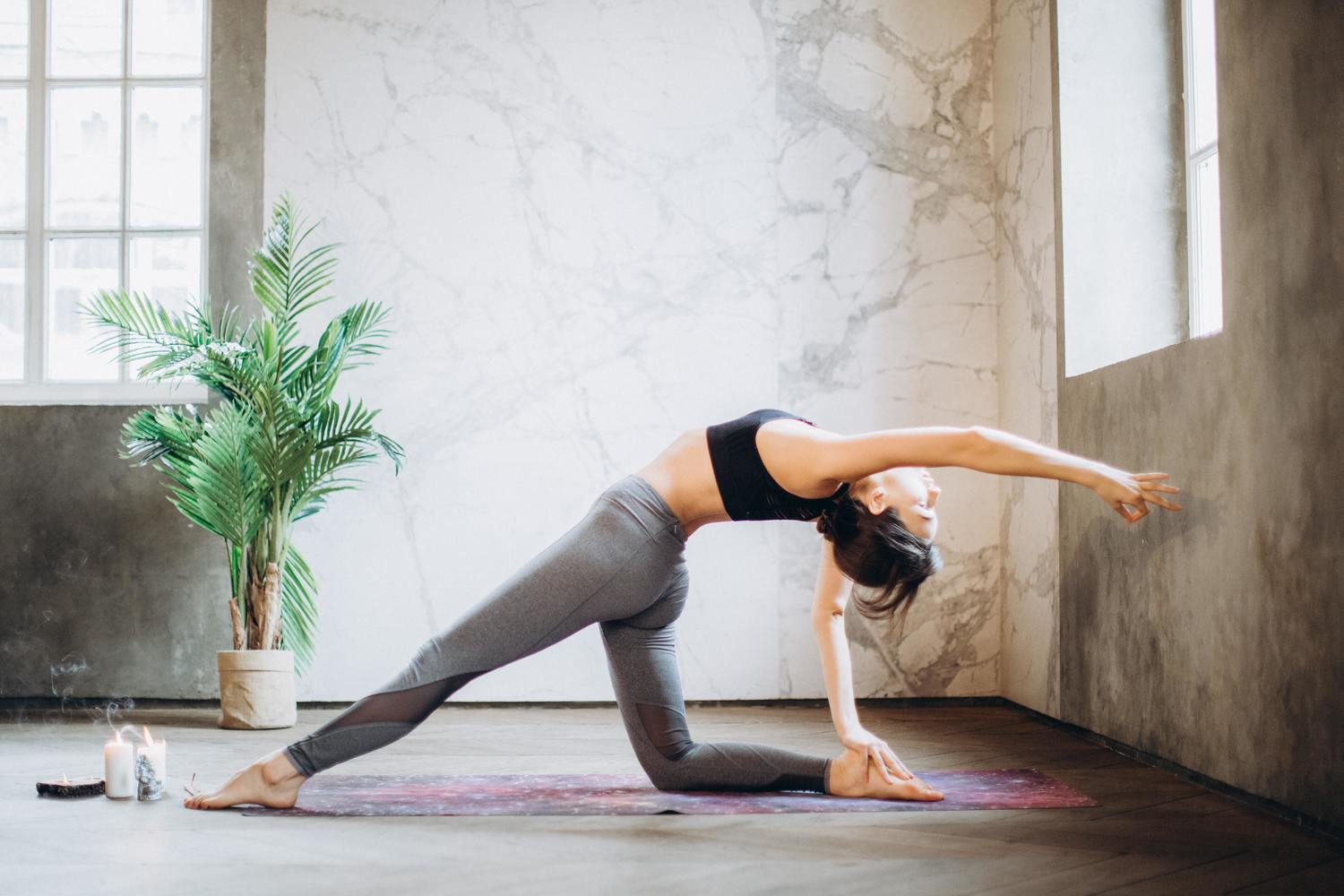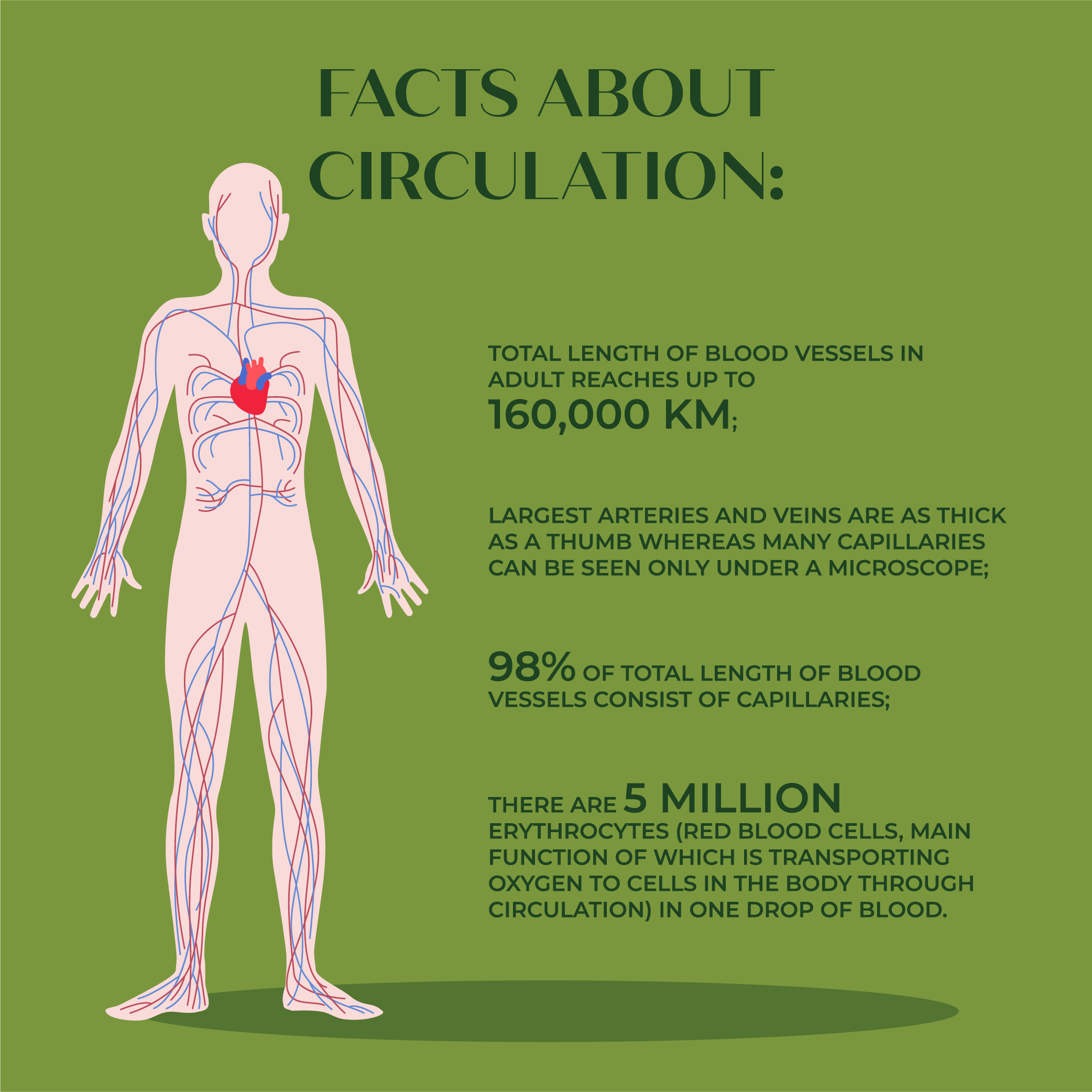How to improve your blood circulation?


What are signs of poor circulation?
If your limbs do not get enough blood, your hands or feet can freeze, be cold or numb. If you have a pale complexion your feet may look bluish. Another indication of poor circulation is dry skin (especially on foot and legs). In some men it may manifest as erection failure. If you have diabetes, your scratches, ulcers or wounds tend to heal slower.
How to help your circulation?
Do not smoke
Nicotine is the active substance of cigarettes, electronic cigarettes and smokeless tobacco. It damages arterial walls and makes blood so thick that they cannot flow through. If you are smoking, give up this habit! It is not easy, but your doctor might help! Do not hesitate, ask for help!
Control your blood pressure
If it is too high, it can cause atherosclerosis, a condition where fat-like substances, mainly cholesterol, deposit in the walls of blood vessels. Over time atherosclerosis leads to vessel deformation and narrowing and even complete blockage. It is a cause of many very dangerous conditions, such as thrombosis, myocardial infarction, stroke. Your blood pressure should be 120/80 mm Hg where 120 is the upper and 80 is the lowest indicator of blood pressure. Nonetheless consult with your doctor to find out the optimum blood presser suitable for you and your health condition. Check your blood pressure at least once a month. You can buy blood pressure monitor or receive a BP monitor service at the pharmacy.
Drink water
Roughly half of the blood consists of water. Therefore, you must have sufficient hydration status for the blood to flow normally. Try to drink at least 1.5 L (approximately 8 glasses) of water daily. Drink more if you exercise (do sports) or it is hot outside.
Get up from your desk
Sitting for hours is not beneficial for your circulation or back. It weakens leg muscles and slows down circulation in the lower limbs which favours clot formation. If you work at the office, make sure to stand up every 30 minutes. You will benefit from switching positions from sitting to standing even for 1 minute. Climb the stairs instead of taking an elevator, go to a colleague and ask a question in person rather than over a phone. If your office work does not involve prolonged sitting, consider buying a standing desk. It will take some time to get used to it, but when you stand, the venous valves in your feet operate correctly and send blood right to the heart.
Yoga
Yoga helps strengthening muscles, cords and even allows regaining physical shape quickly after long-lasting illness therefore exercises aimed at cord and muscle flexibility may enhance circulation. Body movements provide your cells with oxygen. Not only yoga improves circulation but also protects from routine injuries that may arise due to immobile, restricted and stiff body.
Move
Aerobics means “with oxygen". If you run, ride a bicycle, walk, swim and do similar exercise you increase oxygen intake and deliver it to muscles. It makes heart to pump blood, strengthens your heart and lowers blood pressure. Pick a goal of 30 minutes' exercise 5 o 7 times a week. If you cannot find 30 successive minutes for such activity, split it up to suit your possibilities. If you choose walking, you should know that moderate or intense speed, at least 5 km per hour, will provide most health benefits. You must take into account also your years because walking speed decreases as you age. Walks are wonderful way to prevent lowering of physical functions and improving circulation that is so important with ageing. They are free of charge, easy to do, and you can walk virtually everywhere, making a walk a perfect type of exercise suitable for any age.
Eat more fruits and vegetables, and less meat
Let's be honest – a balanced diet does not have any negative aspects. Eat a lot of fruits and vegetables. Avoid saturated fat found in red meat, chicken, cheese and other animal products. Avoid excessive salt consumption. It will help to keep your weight within a healthy range and control cholesterol levels and blood pressure – it means that your arteries will be unobstructed.
“Brush” your body, not only hair
Push blood in the right direction. Take a dry brush with solid, flat bristles and slide over dry skin. Start with legs and move upwards with long movements over your limbs. Move your brush in circular movements on the belly and lower back. Dry brushing will help you exfoliate dry, dead skin. Do it on a daily basis before shower.
Take a bath
It is not a long-term solution nevertheless bath is a wonderful way to activate your circulation. Warm water slightly opens up your arteries and veins thus ensuring more intense and rapid movement of blood. But be careful because excessively hot bath can dilate your vessels too much and you may start to feel unwell. Also, hot tea is a good way to activate circulation.
 Free delivery to Omniva parcels throughout the Baltics for purchases from 20 euros!
Free delivery to Omniva parcels throughout the Baltics for purchases from 20 euros!
